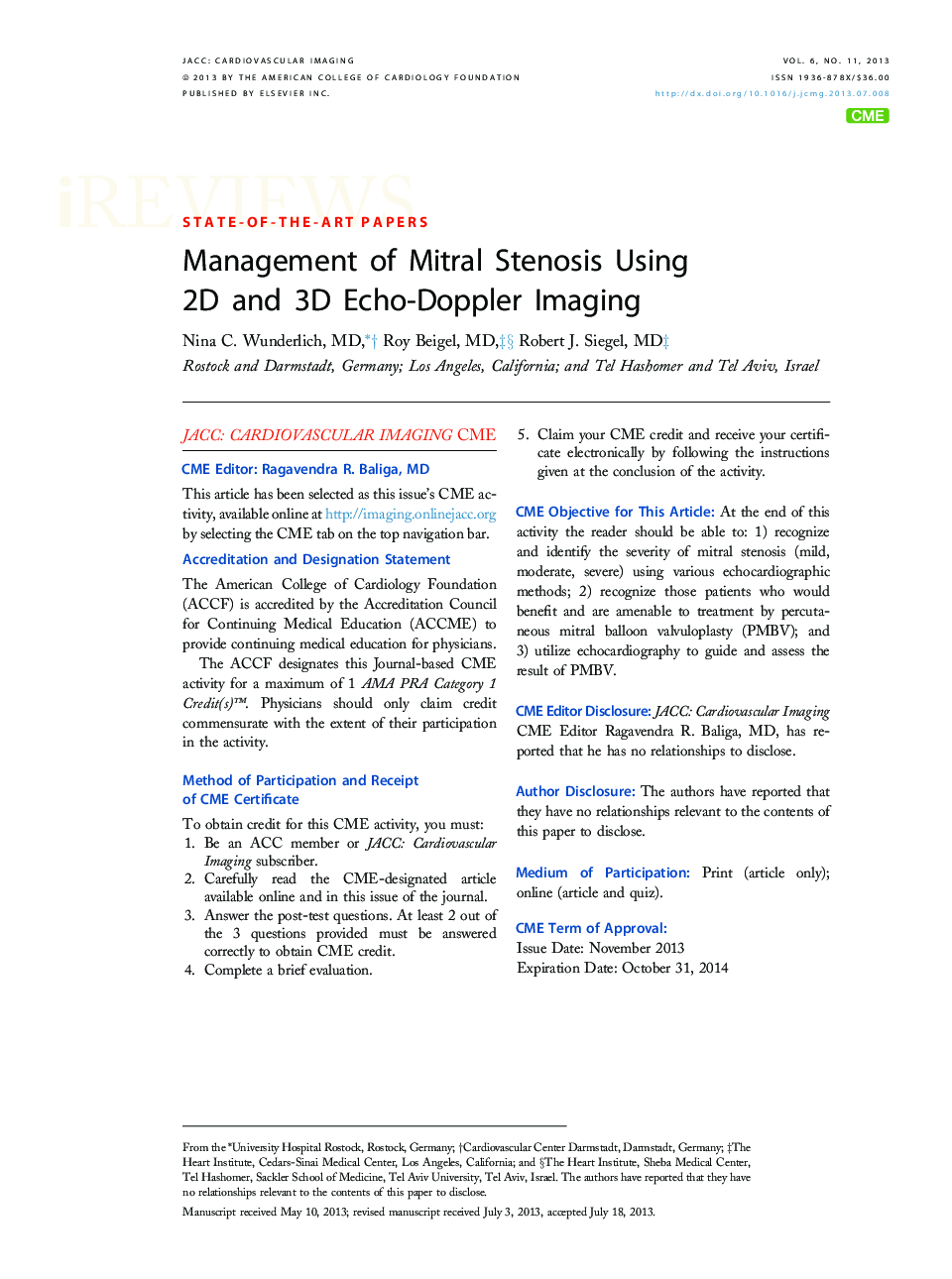| Article ID | Journal | Published Year | Pages | File Type |
|---|---|---|---|---|
| 2937785 | JACC: Cardiovascular Imaging | 2013 | 15 Pages |
Although the prevalence of rheumatic fever is decreasing in developed countries, it still affects numerous areas in the nonindustrialized world. Untreated mitral stenosis (MS) contributes to a significant global morbidity and mortality. Echocardiography is the main diagnostic imaging modality with which to evaluate mitral valve (MV) obstruction and assess the severity and hemodynamic consequences of MS as well as valve morphology. According to current guidelines and recommendations for clinical practice, the severity of MS should not be defined by a single value but assessed by valve areas, mean Doppler gradients, and pulmonary pressures. Transthoracic echocardiography is usually sufficient to grade MS severity and to define the morphology of the valve. Transesophageal echocardiography is used when the valve cannot be adequately assessed with transthoracic echocardiography and to exclude intracardiac thrombi before a percutaneous or surgical intervention. Three-dimensional transthoracic and transesophageal echocardiographic assessment provide more detailed physiological and morphological information. Current definitive treatment for severe MS involves percutaneous mitral balloon valvuloplasty (PMBV) or surgery. The effectiveness of PMBV is related to the etiology of MS, and certain anatomic characteristics tend to predict a more successful outcome for PMBV, whereas other MV structural findings might suggest balloon valvuloplasty to be less likely successful or even contraindicated.
